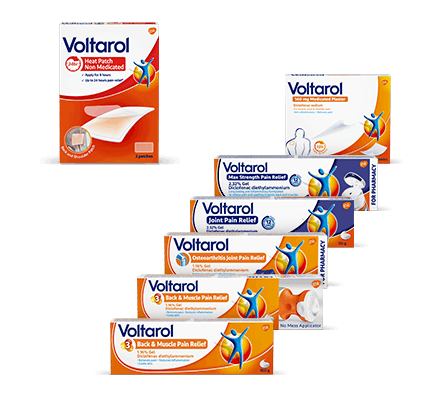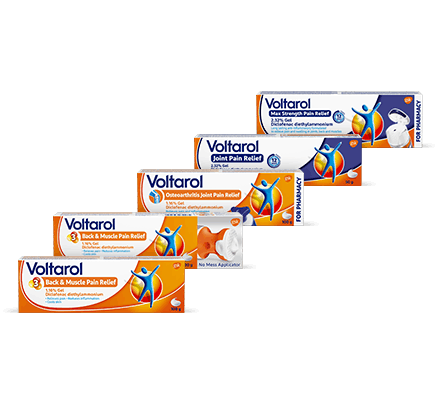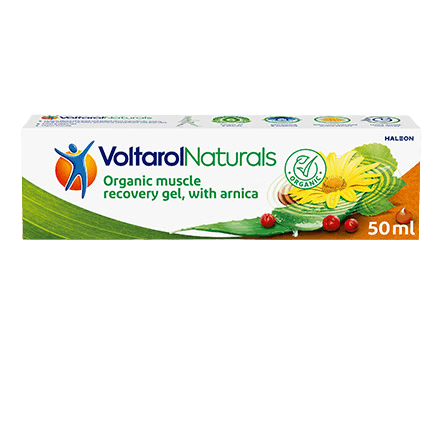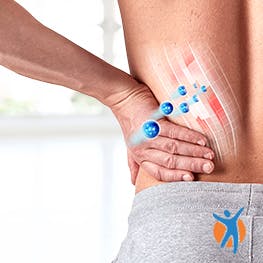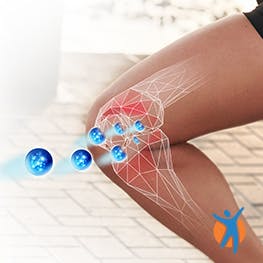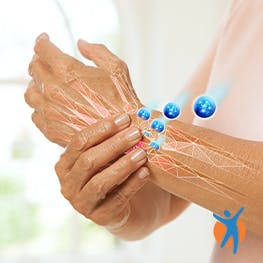
SHARE THIS ARTICLE:
Middle back pain is a common problem and while it can disrupt your life, it doesn’t usually last long. Most people start to get better within just two to four weeks. There are plenty of treatments that can help during this time, so you can stay active and live life to the full.
What is middle back pain?
If you have back pain, it can be difficult to identify which part of your back it originates from. You might think you have upper back pain if it’s at the top of your back, but this is actually defined as middle back pain. Middle back pain (also known as thoracic back pain) is when the pain is above the bottom of your ribs (about where your waist sits) between your shoulder blades and below your neck. The pain may be a dull, constant ache or a sudden, sharp pain that makes it difficult to move around.
You might find that the pain may ease, or get worse, when you move into different positions.
So what’s happening with your back? This can vary but it’s usually because of one of these reasons:
- Muscular irritation. There are large muscles in your middle back which can be prone to developing painful strains or tightness. You may develop middle back pain over time if you put a strain on it. This might be from having a poor posture, particularly if you sit at a desk for hours, or do some type of repetitive motion, which is called an overuse injury. ...
- A problem with a joint. You might injure a joint in your back suddenly, from a sports injury for example, or it might naturally wear down with age or because of a degenerative condition like arthritis. It’s not unusual to have another health condition that affects your muscles and joints, such as osteoarthritis at the same time as back pain.
- A problem with vertebrae (a disc between two bones in your spine). If this happens, the pain might spread to the sides of your ribs, especially if you physically exert yourself, or even if you take a deep breath. Your chest might feel numb too.
- A compressed nerve around your spine.
Upper back pain is when the problem is in your neck, although it can spread into your shoulder, top of your back, head and even your arms. It can make your neck feel stiff and the muscles in the surrounding area can spasm. The pain might be aggravated by certain movements, your posture and activities, and be relieved by others.
There are treatments for both upper (neck) and middle back pain.
How to treat middle back pain
If you have a problem with vertebrae in your spine you might need to rest for a short time (usually a couple of days or so), and then gradually become more active.
Pain-relieving medicines can help you get up and moving. To decide which medicine is best for you, it may help to learn a bit about pain, and what happens in your body in the article: Understanding the difference between acute and chronic pain.
...
Voltarol Back & Muscle Pain Relief 1.16% Gel is a topical medicine that relieves pain, reduces inflammation and so helps speed up recovery with its triple effect. It brings targeted, local relief for pain and swelling (inflammation). The active ingredient in Voltarol Back & Muscle Pain Relief 1.16% Gel is a NSAID called diclofenac. Diclofenac works to inhibit prostaglandins synthesis (substances in the body that cause pain and inflammation). By reducing their amounts, diclofenac helps to relieve pain and reduce inflammation.
Ask a pharmacist or your GP if you would like advice about what would be the best treatment for you.
Once you feel more comfortable, it’s a good idea to see a physiotherapist to do an exercise programme to strengthen the muscles in your back and improve your posture.

SHARE THIS ARTICLE:
Treatment by pain type
Learn all about the causes, symptoms, and pain treatments for the type of pain you’re experiencing so you can get back to doing those little things that bring you joy.


